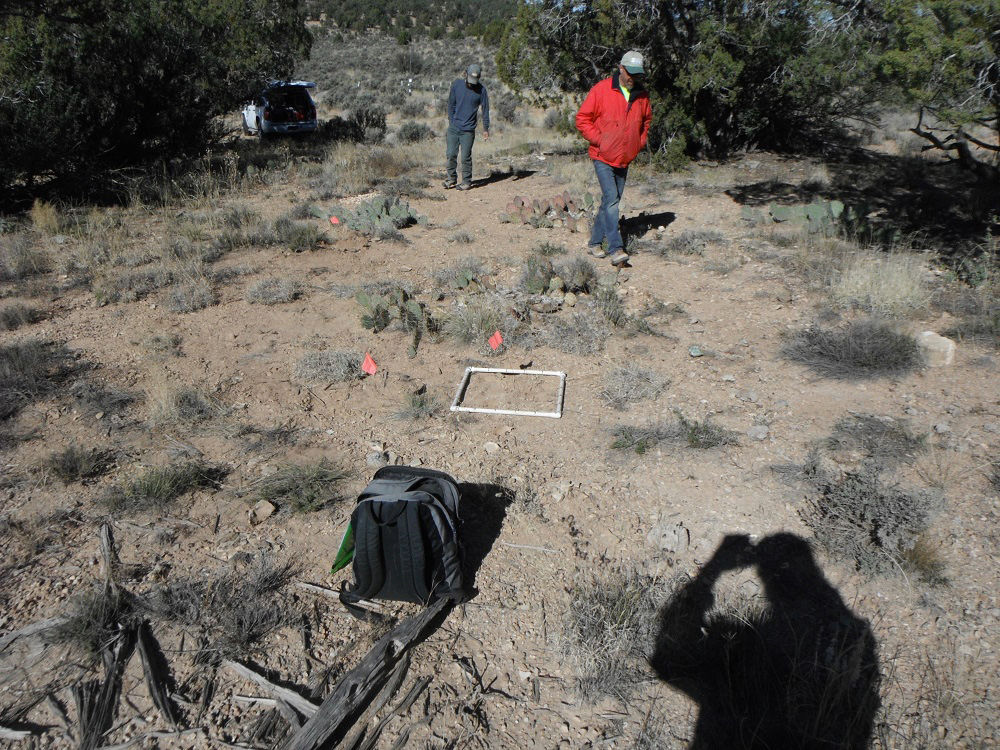Two Alpha E Radon meters were installed at locations east of the surface-ore-storage pile, and north of the mine and mine-ventilation shaft to measure concentrations of radon gas in the air. Radon gas is a short-lived, radioactive product of the radioactive decay of uranium, and is a health hazard to biota if inhaled. In addition, a time-lapse camera was installed near the ore-storage pile to record variations in the size of the ore pile through time. The instruments were installed and operated at the Pinenut mine from March 2015 through May 2016 during mining and reclamation activities to address concerns about uranium-mining related impacts to areas surrounding Grand Canyon National Park. During July 2015, Radonair concentrations associated with the ore-storage-pile monitoring site were larger than the mine-ventilation monitoring site and likely resulted from the relatively large amount of ore stored on site during this period. Higher wind velocities at the ore-storage-pile monitoring site generally resulted in lower Radonair concentrations; however, wind velocity did not appear to be an important factor in controlling Radonair concentrations at the mine-ventilation monitoring site. Physical disturbances of the ore-storage pile by heavy equipment did not coincide with elevated Radonair concentrations at the ore-storage pile or mine-ventilation monitoring sites. The relative size of the ore-storage pile showed a positive trend with the mean daily Radonair concentration measured at the ore-storage-pile monitoring site1. All data generated during the field study and laboratory verification tests are publicly available2. Please see the new story map about the Radon study at the Pinenut mine3.
Any use of trade, firm, or product names is for descriptive purposes only and does not imply endorsement by the U.S. Government or the University of Montana.
Completed
Task 7b: Collect/analyze water and sediment samples Task 7c: Collect/analyze samples from biota with focus on trust resources Task 7d: Collect/analyze soils including deeper horizons to characterize vertical distributions Task 11: Characterize the wind dispersion characteristics of uranium and trace elements associated with uranium mining and the subsequent risk to biota. Task 18: Evaluate radiation risks to biota using subterranean habitats
1 Naftz, D.L., Walton-Day, K., Gardner, W.P., Duniway, M.C., and Bills, D., 2020, Natural and anthropogenic processes affecting radon releases during mining and early stage reclamation activities, Pinenut uranium mine, Arizona, USA: J. Environmental Radioactivity 220-221 106266, https://doi.org/10.1016/j.jenvrad.2020.106266.
2 Naftz, D.L., Walton-Day, K., Gardner, W.P., Duniway, M.C., and Bills, D.J., 2018, Radon data and time-lapse photos collected outside the Pinenut uranium mine, Arizona, 2015-16: U.S. Geological Survey data release, https://doi.org/10.5066/F79Z946T.
3 Katherine Walton-Day, JoAnna R. Wendel, Jo Ellen Hinck, David L. Naftz, and Sharon L. Qi, 2021, Invisible: Radon Gas at the Pinenut Uranium Mine, accessed July 13, 2021, at URL https://apps.usgs.gov/colorado-water/radon-pinenut-mine.html
David Naftz
Research Hydrologist (Retired)
Wyoming-Montana Water Science Center
406.457.5945
dlnaftz@usgs.gov
Katie Walton-Day
Hydrologist
Colorado Water Science Center
303.236.6930
kwaltond@usgs.gov
| University of Montana |
